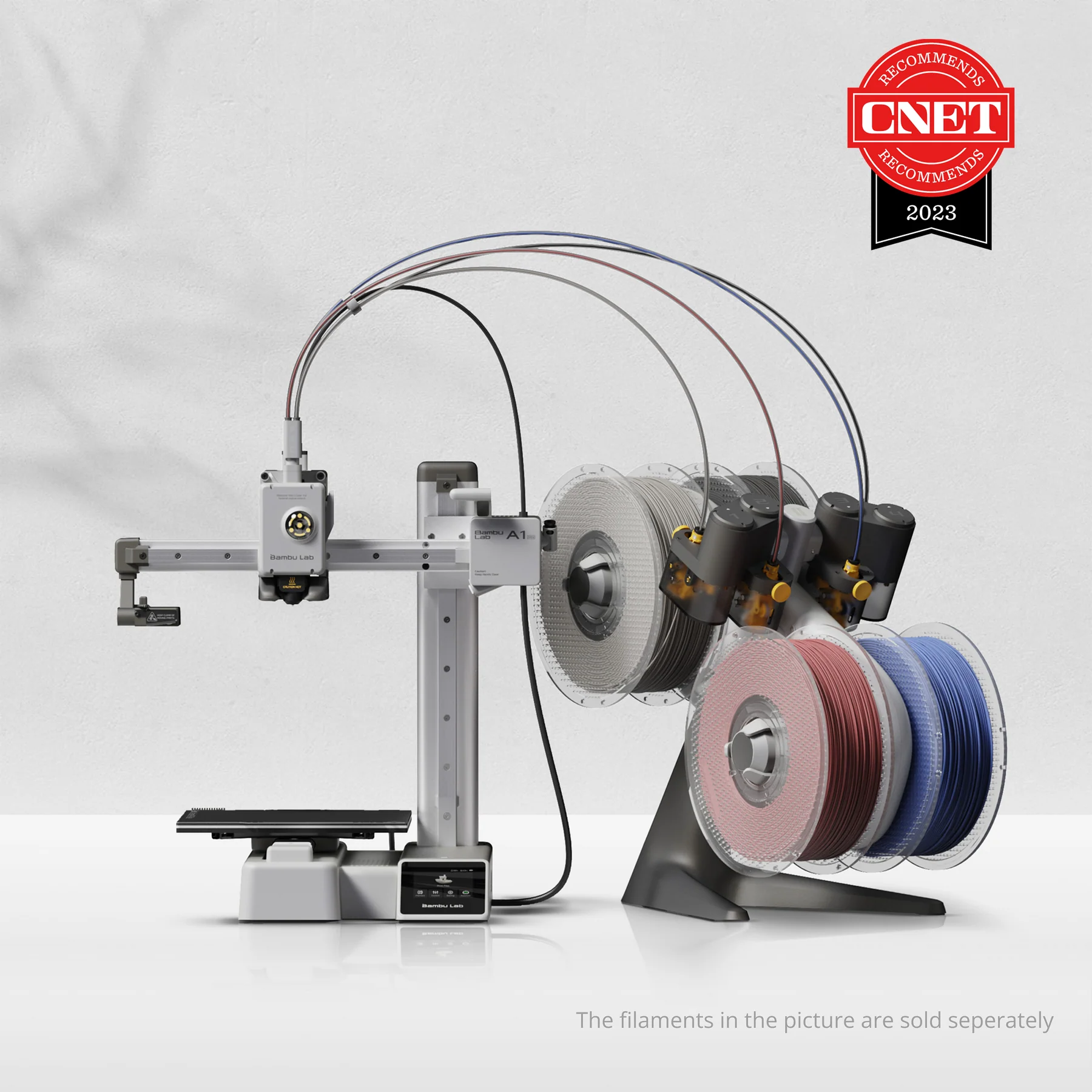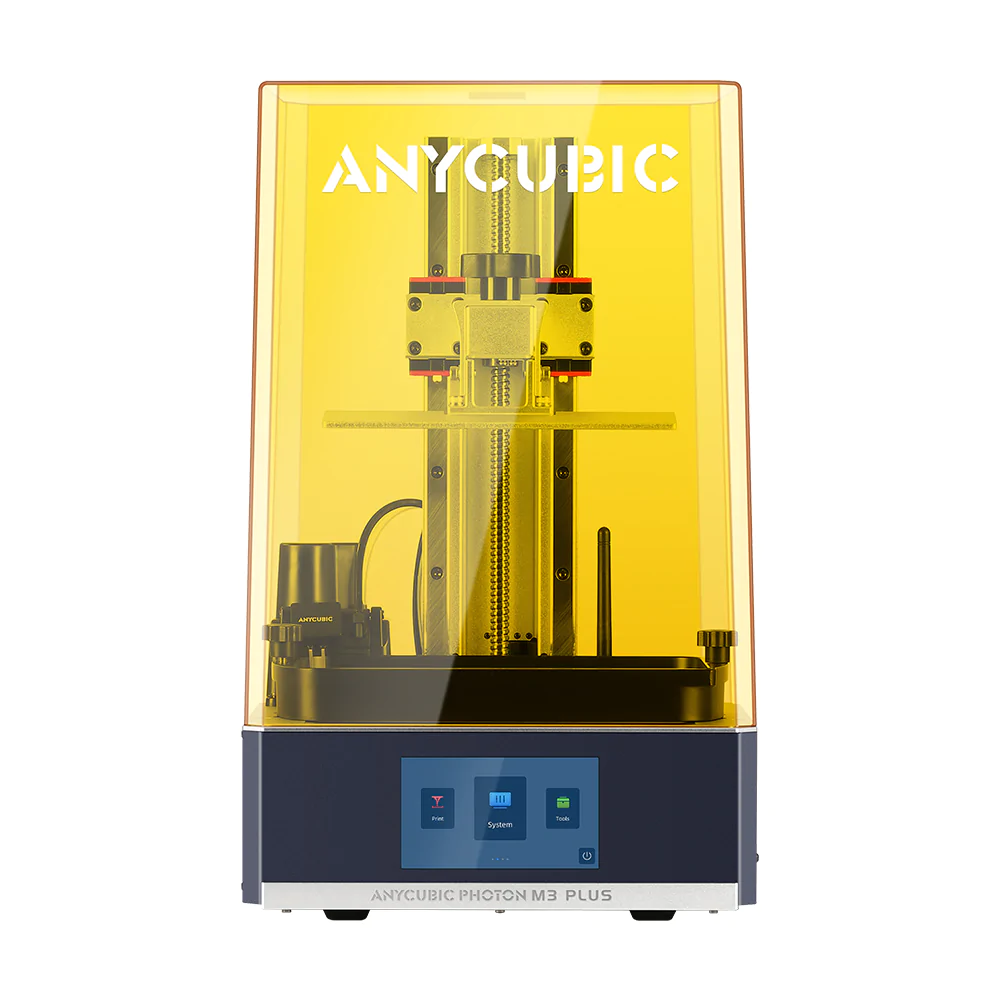Compare A1 Mini vs Photon M3 Plus
Comparison between the best 3D printers
Choose the best 3D printer at the best price. The cheapest 3D printers are here.
Buy a 3D printer here with 3D Fila.
 |
 |
|
| Model | A1 Mini |
Photon M3 Plus |
| Printing Material | Filament | Resin |
| Buy Filament for Bambu Lab A1 Mini | Buy Resin forAnycubic Photon M3 Plus | |
| Estimated price | $549,00 | $430,00 |
| Manufacturer | Bambu Lab | Anycubic |
| Release Year | 2023 | 2022 |
| Print Volume [mm] | 180x180x180 | 197x122x245 |
| Printer Size [mm] | 315x347x365 | 290x360x475 |
| Weight [kg] | 5,5 | 11 |
| Power Loss Recovery | YES | NO |
| Maximum Resolution [mm] | 0,1 | 0,01 |
| Processor | 32-bit Silenciosa | |
| Display | Touchscreen 2,4'' | Display touchscreen 4,3'' |
| Power Supply | 150 W | 150 W |
| Connectivity | Wifi, Bambu bus, Cartão SD | USB / Wi-Fi |
| Operating systems | Windows, Linux, Macbook | |
| Date of registration in the system | 2024-04-10 | 2023-01-19 |
| Release date | 2023 | 2022 |
| Extra features | The Bambu Lab A1 Mini stands out not only for its impressive speed and automatic calibration, but also for its multi-color printing capability thanks to AMS Lite. This innovative system makes multi-color printing easy, making it accessible to everyone. AMS Lite, specific to the A1 Mini, supports up to four different materials simultaneously, providing creative freedom without complications. With comprehensive sensors for energy monitoring and recovery, a camera for timelapses and Wi-Fi control, the A1 Mini and AMS Lite together offer an intuitive and advanced 3D printing experience, ideal for materials such as PLA, PETG and TPU, and designed for simplicity and fast maintenance with quick-change nozzles. | The Photon M3 Plus printer stands out for its automatic resin filling system, capable of keeping the tank always full. It offers wireless connectivity and support for the Anycubic Cloud app, allowing remote control and monitoring, including with an optional camera. Its 34-micron resolution, provided by a 9.25-inch monochrome LCD screen, ensures high-precision prints. Printing speed is remarkable, with a layer curing in 1.5 seconds. Other features include a large build volume, laser-etched build plate, and compatibility with a wash and cure station. |
| Support for multiple colors and materials (AMS and CFS) | YES | NO |
Notes * |
||
| Cost-benefit | 7 / 10 | 8 / 10 |
| Hardware | 4.8 / 10 | 2.8 / 10 |
| Tela | . | . |
| Print volume | 3 / 10 | 3 / 10 |
| Performance | 4 / 10 | 9 / 10 |
Conclusion |
| In comparing the Bambu Lab A1 Mini and the Anycubic Photon M3 Plus, several key factors come into play, including functionality, features, and pricing. The A1 Mini, although priced higher, excels in several areas. It offers notable versatility with multi-color printing capabilities through its AMS Lite system, automatic calibration, and a user-friendly touchscreen interface. Its speed, power loss recovery feature, and comprehensive sensors enhance the overall usability, making it ideal for users looking for a hassle-free printing experience. The printer is lightweight which may appeal to those with limited space. On the other hand, the Photon M3 Plus, although more affordable, focuses on high-precision resin printing. It features an automatic resin filling system, which is a significant convenience for continuous use, with exceptional resolution and printing speed that makes it suitable for detailed projects. However, it lacks some of the user-friendly features offered by the A1 Mini, such as power loss recovery and multi-color support. In terms of cost-benefit analysis, while the A1 Mini scores slightly lower in overall value, its advanced capabilities justify the higher price for users seeking versatility and ease of use. Conversely, the Photon M3 Plus offers a stronger value proposition for those specializing in high-precision resin prints without the need for multi-material printing. Ultimately, the decision hinges on the user's priorities: if you need a fast, versatile printer that can handle multiple colors and materials with ease, the A1 Mini is the better choice. However, if your focus is on detailed resin printing at an affordable price, the Photon M3 Plus presents a compelling option. Each printer has its strengths, making them suitable for different types of users and applications in the 3D printing landscape. |

